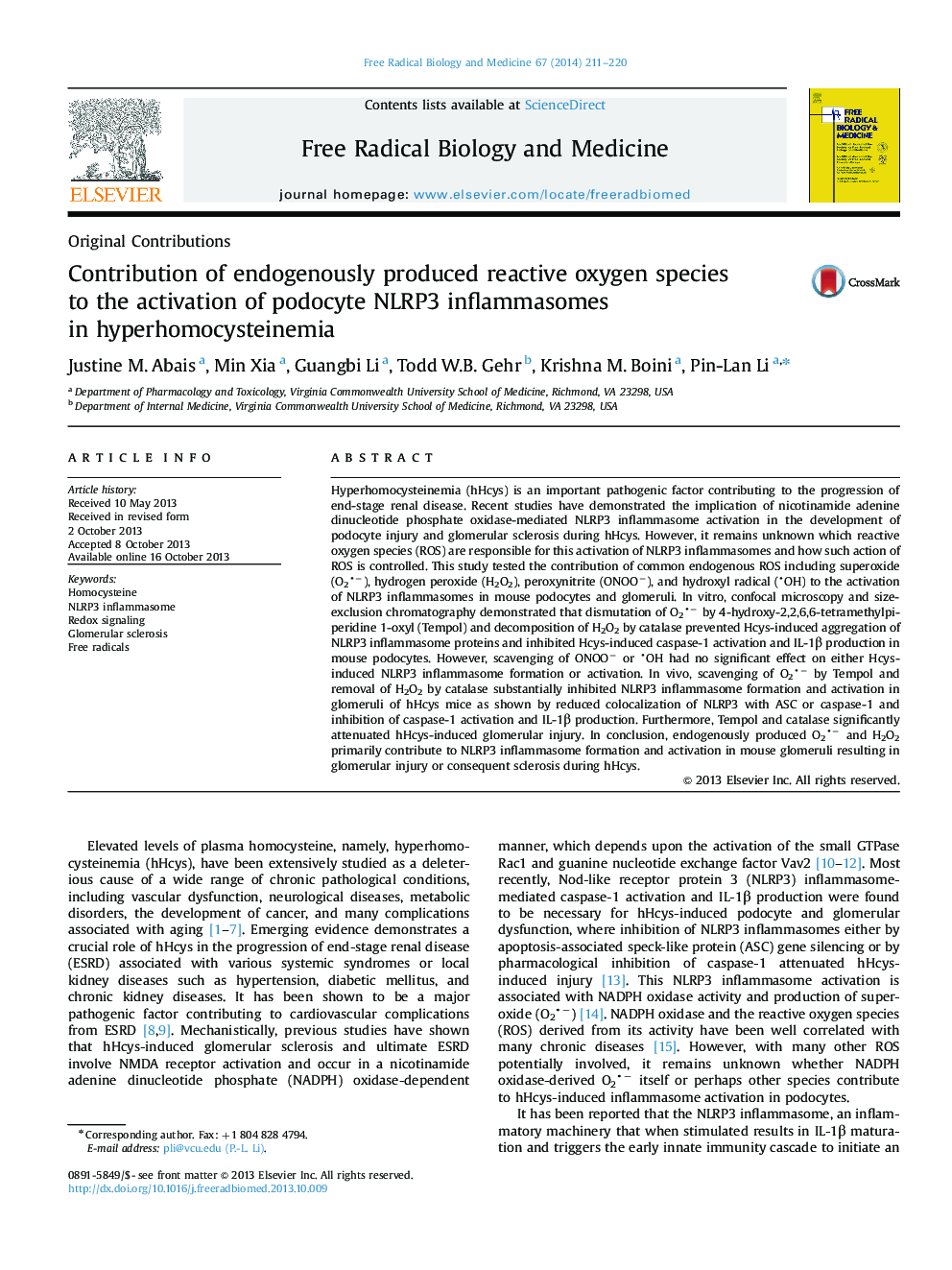| کد مقاله | کد نشریه | سال انتشار | مقاله انگلیسی | نسخه تمام متن |
|---|---|---|---|---|
| 8270980 | 1534975 | 2014 | 10 صفحه PDF | دانلود رایگان |
عنوان انگلیسی مقاله ISI
Contribution of endogenously produced reactive oxygen species to the activation of podocyte NLRP3 inflammasomes in hyperhomocysteinemia
دانلود مقاله + سفارش ترجمه
دانلود مقاله ISI انگلیسی
رایگان برای ایرانیان
کلمات کلیدی
موضوعات مرتبط
علوم زیستی و بیوفناوری
بیوشیمی، ژنتیک و زیست شناسی مولکولی
سالمندی
پیش نمایش صفحه اول مقاله

چکیده انگلیسی
Hyperhomocysteinemia (hHcys) is an important pathogenic factor contributing to the progression of end-stage renal disease. Recent studies have demonstrated the implication of nicotinamide adenine dinucleotide phosphate oxidase-mediated NLRP3 inflammasome activation in the development of podocyte injury and glomerular sclerosis during hHcys. However, it remains unknown which reactive oxygen species (ROS) are responsible for this activation of NLRP3 inflammasomes and how such action of ROS is controlled. This study tested the contribution of common endogenous ROS including superoxide (O2â), hydrogen peroxide (H2O2), peroxynitrite (ONOOâ), and hydroxyl radical (OH) to the activation of NLRP3 inflammasomes in mouse podocytes and glomeruli. In vitro, confocal microscopy and size-exclusion chromatography demonstrated that dismutation of O2â by 4-hydroxy-2,2,6,6-tetramethylpiperidine 1-oxyl (Tempol) and decomposition of H2O2 by catalase prevented Hcys-induced aggregation of NLRP3 inflammasome proteins and inhibited Hcys-induced caspase-1 activation and IL-1β production in mouse podocytes. However, scavenging of ONOOâ or OH had no significant effect on either Hcys-induced NLRP3 inflammasome formation or activation. In vivo, scavenging of O2â by Tempol and removal of H2O2 by catalase substantially inhibited NLRP3 inflammasome formation and activation in glomeruli of hHcys mice as shown by reduced colocalization of NLRP3 with ASC or caspase-1 and inhibition of caspase-1 activation and IL-1β production. Furthermore, Tempol and catalase significantly attenuated hHcys-induced glomerular injury. In conclusion, endogenously produced O2â and H2O2 primarily contribute to NLRP3 inflammasome formation and activation in mouse glomeruli resulting in glomerular injury or consequent sclerosis during hHcys.
ناشر
Database: Elsevier - ScienceDirect (ساینس دایرکت)
Journal: Free Radical Biology and Medicine - Volume 67, February 2014, Pages 211-220
Journal: Free Radical Biology and Medicine - Volume 67, February 2014, Pages 211-220
نویسندگان
Justine M. Abais, Min Xia, Guangbi Li, Todd W.B. Gehr, Krishna M. Boini, Pin-Lan Li,